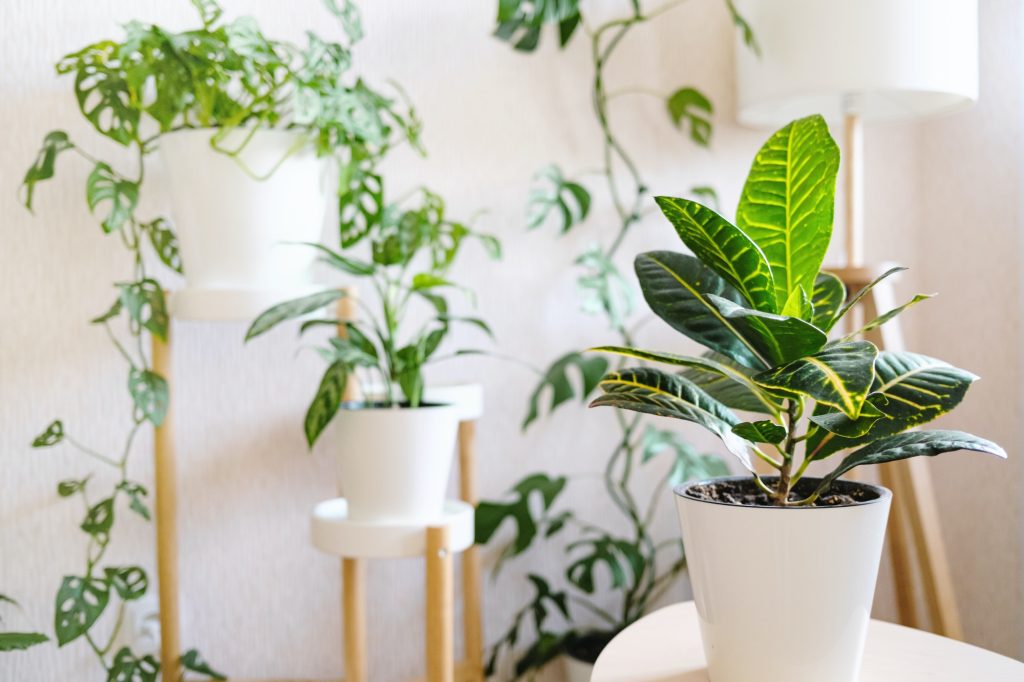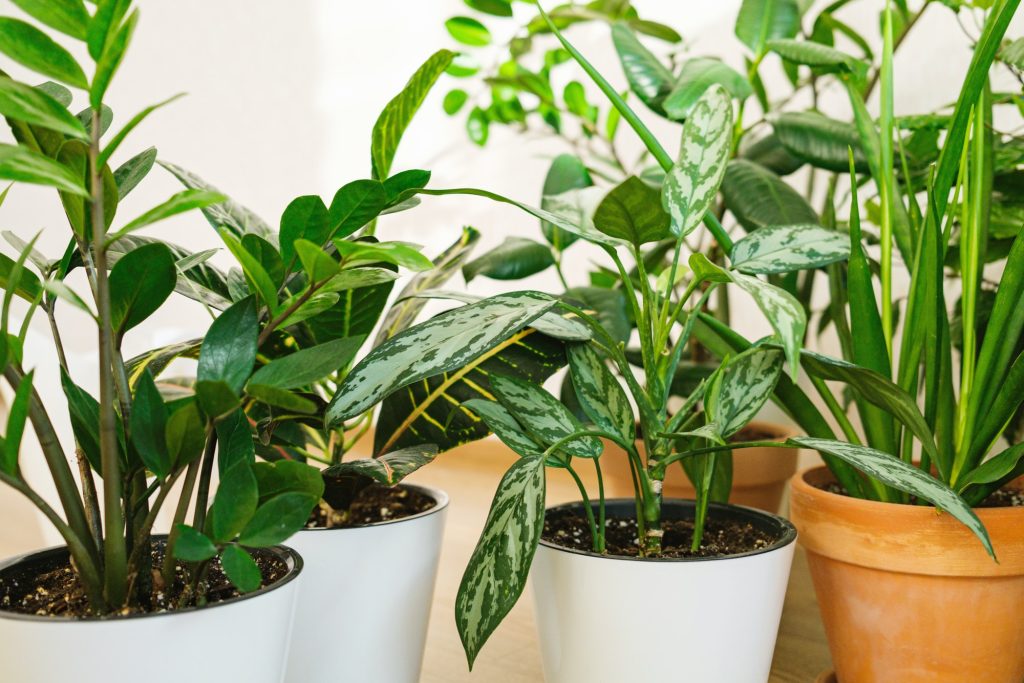Are croton houseplants easy to care for? Croton houseplants are not high maintenance plants so yes they are easy to care for.
However, there are certain things you need to put in place to help you grow healthy crotons. This houseplant is a common variety in many households, and it is loved for its color-changing foliage.
Croton houseplants tend to make a great gift as the plant symbolizes change. Hence, it’s appropriate for cheering one on.
There are lots of reasons to have a croton plant in your home. The average lifespan of this houseplant is 2 to 4 years, and it’s one of the boldest houseplants too, it offers colorful foliage marked with bright yellow, red, orange, and ear black.
While croton plants are low maintenance plants, keep in mind that they also require being cared for a specific way just like every other houseplant. Crotons like to be kept moist and not wet, they can become top-heavy too, so you need to pick a container that won’t tip over the bigger they get.
One way to keep crotons outliving their lifespan is to find the right way to care for them. It is not easy to provide croton plants the right care as many are made to believe. But not to worry, this article contains everything you need to learn about caring for croton houseplants.
The Croton Houseplant Care Guide You Need
There are a couple of issues that will pop up when growing croton plants which is why knowing how to care for them is vital. Croton is an evergreen plant of the spurge family, and it’s quite rare for this indoor plant to flower.
However, below is a care guide to help you grow healthy thriving croton houseplants.
1. Humidity Levels
The humidity level of your home is important for any houseplants and with croton, you should consider putting it in a room with high humidity.
Croton plants will do well in normal humidity of 40% and 60% but if you live in a relatively dry environment, you should mist the plant once a week or place it on a pebble tray filled with water.

You can also invest in a smaller humidifier if the humidity in your home is low. However, misting the leaves with water once a week can also help them stay healthy and flourish. Placing a pebble tray with water is another way you can create artificial humidity for croton houseplants.
2. Watering
How often you water croton plants depends on the situation. Too much water can cause croton plants to rot but it does require frequent watering, just be sure not to overwater it.
Not giving it enough water can also dry croton plants hence moderation is key. New croton foliage will start to wilt if it is thirsty so that should serve as an indication of when to water your plants.
Generally, water croton plants 3 to 7 days in summer and the same in spring to keep the soil moist. You can water croton houseplant daily or weekly making sure the soil doesn’t stay dry for too long and it’s not soggy either.
3. Sunlight Needs
Croton plants love full sun just like most houseplants. Most varieties of proton plants will thrive in full sun but some will also tolerate partial shades.
Ensure your croton plants receive 6 to 8 hours of sunlight every day to retain their full vibrant color. Note that some varieties of croton plants prefer bright indirect sunlight hence do not keep them in bright sunlight for too long.
While some varieties of croton grow their best color in bright sunlight, others prefer partial shades. The plants with variegated multicolored foliage need more sunlight than the other varieties. Place your croton houseplants in a sunny window.
4. Fertilizer
Fertilizer is another important aspect of caring for croton plants. Most varieties of croton are heavy feeders and fertilizing it will encourage growth but best to feed them once a month.
This houseplant tends to look its best with the right application of slow-release fertilizers and low nitrogen. Ensure to follow the manufacturer’s guide when feeding it fertilizer. Do not feed croton during the dormant season either.
5. Temperature
Croton plants don’t do well in extreme heat but since they are tropical plants then warm weather is the ideal temperature for them.
Croton plants can withstand short periods as low as 40 but not as hot as 100 degrees. But the preferred temperature for croton ranges between 65 and 85 degrees. The leaves may start to turn brown if the temperature exceeds 85.

6. Potting And Repotting
The right pot size is important for potting and repotting croton plants. Croton houseplants tend to grow upright hence they should be repotted every year in the spring or early summer but only for the first growing season.
Ensure to pick a pot that is large enough to accommodate the plant as it grows by taking into account the root ball of the plant. If there is a need for repotting, it should be done in spring and get a container with good drainage holes.
FAQs- Croton Houseplant Care Guide (2022)
How do you winterize a croton plant?
It is vital to keep croton plants safe in winter. To winterize the croton plant, you need to have it moved or planted in a calm warm spot, and to maintain humidity, water it lightly. Mist around the leaves lightly once a week if the humidity is and let it dry out between watering.
Where do crotons grow best?
Croton plants grow best in full sun, but this depends on the varieties. Most croton plants can tolerate light shade and even prefer partial shade too. They are best planted in Subtropical South and Central Florida.
How do I keep my croton houseplants happy?
One of the ways you can keep croton plants are happy is using a good drainage pot. You should also keep them in an area that gets at least 6 to 8 hours of sunlight. Just like other indoor plants, croton plants love moisture so keep it wet.
Are coffee grounds good for Crotons?
Yes, used coffee grounds can help with the growth of croton plants however feed them in moderation. Too many coffee grounds can hold in lots of moisture and turn your plant moldy.
How can I make my Croton grow faster?
Note that croton has a moderate to slow growth rate compared to other houseplants. They can go only to 12 inches in a growing season but to encourage faster growth, it needs to stay consistently warm, contact watering, and lastly bright filters light.
Final Thoughts
Croton is an eye-catching houseplant, and it does have many varieties for you to try. Although this plant is easy to grow, you should also know that without proper moisture and humidity, it is unlikely to thrive.
Note that all parts of this plant are also poisonous so keep it far away from your pets and kids. In addition, give it enough time to grow and take time to sterilize your cutting tools properly before pruning.

